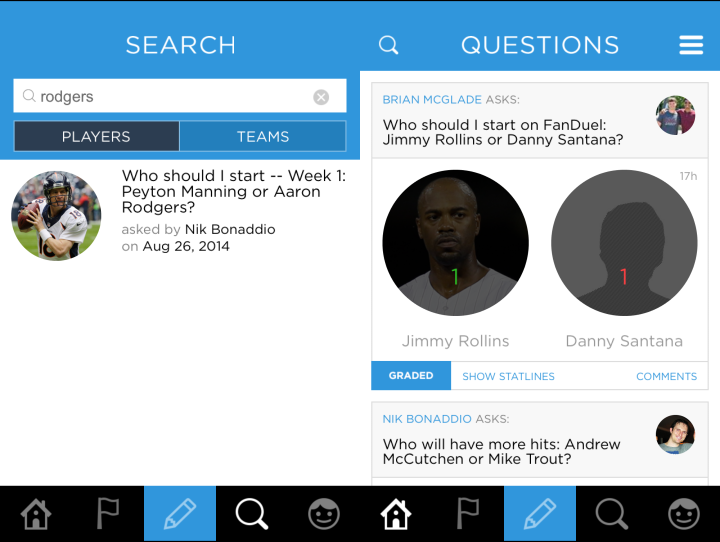
A partner of sports standards like SB Nation, ESPN, DraftKings, and Sports Illustrated, numberFire is a predictive analytics service that predicts team and player performances. The company boasts high success rates in NFL (68 percent), NBA (66 percent), college basketball (72 percent), and college football (78 percent) games. It has also correctly picked the last three Super Bowl and March Madness winners.
Related: The 6 best fantasy football websites compared
NumberFire claims fantasy teams that use its service perform 30 percent better. The new iOS app will launch on September 2 with an emphasis on using predictive information and crowdsourced knowledge to help pick better players and form strong teams. Basically, the numberFire app is coming to help you stop hemorrhaging money in your fantasy leagues.
Built into the numberFire app is a fantasy draft cheat sheet that will put you in a position to pick the best player for your roster. The draft kit, also available online, allows you to customize league settings to find the best available players and land strong value picks.
Related: Win your fantasy football league with the help of these Android and iPhone apps
The information used in numberFire’s analysis all comes from publicly accessible data, but the predictions are generated by the company’s proprietary technologies and algorithms to determine a player’s value. The FireFactor score is the culmination of all that data. However, the app doesn’t give any explanation as to how it arrived at the score.
The app does provide straight-forward scoring for specific questions, though, so if someone asks, “Who should I start at quarterback this week: Alex Smith or Russell Wilson?” numberFire will provide its points projection. You are, of course, welcome to disagree with it.
Outside of numberFire’s own analytical data, the app relies heavily on crowdsourcing its answers. It’s the Jelly of fantasy sports, allowing users to pose questions to the 150,000 numberFire users and see how they respond. This also proves to be a bit of a meta-game, rewarding frequent responders with reputation points that will help them rise through the ranks of fantasy advice givers.
Users can invite and challenge friends in numberFire, allowing you and your other know-it-all buddies to see who truly does have the best grasp on sports. Your ranking against your friends is broken down into over 170,000 categories, which seems like entirely too many.
In our time with the app, it felt a little plainer than what we were expecting. Advanced stats can be intricate and overwhelming, but numberFire seems committed to keeping it as simple as possible. For fantasy fanatics who just want to know who’s going to get them the most points in a given week, this makes fine sense, and the gamified approach for answering questions appears like a good way to keep already overly competitive fans engaged. We’d just like to get more details on numberFire’s own data. The math obviously yields solid results, but we want to see numberFire show its work.
NumberFire launches for free on iOS devices September 2.



